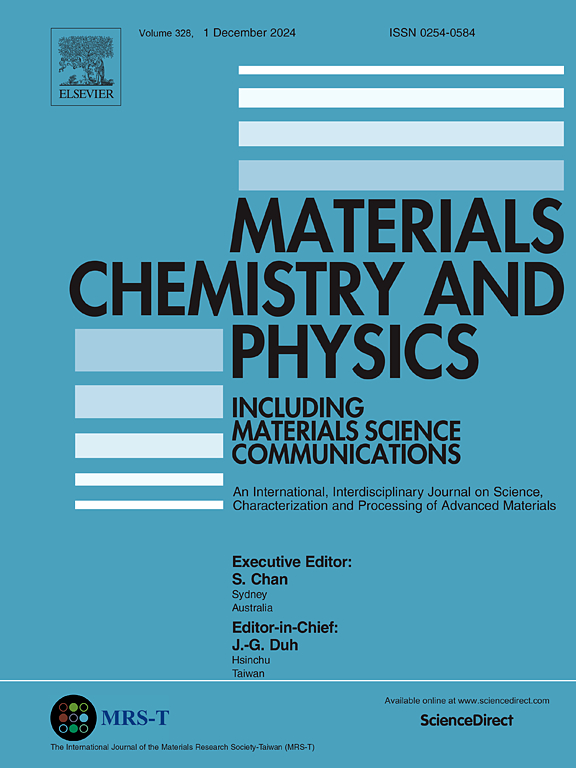Synthesis, characterization, structure refinement and dehydration behavior of sulfate-intercalated hydrocalumite-like layered double hydroxide
IF 4.3
3区 材料科学
Q2 MATERIALS SCIENCE, MULTIDISCIPLINARY
引用次数: 0
Abstract
The chloride-intercalated layered double hydroxide of Ca2+ and Al3+, better known as Friedel's salt, comprises positively charged metal hydroxide layers having the composition [Ca2Al(OH)6]+. The chloride ion is intercalated within all the available sites in the interlayer gallery. The perchlorate-intercalated phase is isotypic with Friedel's salt, and the perchlorate ions occupy all the anionic sites in the interlayer gallery. The sulfate ion has the same size as that of the perchlorate ion, but carries twice the charge. Thereby, the sulfate ions are expected to occupy only half the number of interlayer sites, leaving the rest vacant. With so much void space in the interlayer, the crystal is not expected to be stable. However, this work shows that a sulfate-intercalated layered double hydroxide of Ca2+ and Al3+ could be synthesized. Structure refinement shows that the sulfate ion is intercalated with one of its S–O bonds parallel to the c-axis of the crystal, which is also the stacking direction. The resultant coordination symmetry is C3v. The crystal is stabilized by the incorporation of water molecules in voids not occupied by the sulfate ions. This additional water is hydrogen bonded to the sulfate ions and is lost at a higher temperature (160 °C) than the water molecules coordinated to the Ca2+ ion (100 °C). The former is structural water and its loss leads to the breakdown of the layered structure.
硫酸盐插层类钙矾石层状双氢氧化物的合成、表征、结构细化及脱水行为
氯化物插层的Ca2+和Al3+双氢氧化物,更广为人知的是弗里德尔盐,包含带正电的金属氢氧化物层,其组成为[Ca2Al(OH)6]+。氯离子插入到层间廊中所有可用的位置。高氯酸盐插入相与弗里德尔盐是同型的,高氯酸盐离子占据了层间廊中所有的阴离子位点。硫酸盐离子与高氯酸盐离子大小相同,但携带的电荷是高氯酸盐离子的两倍。因此,硫酸盐离子预计只占据一半的层间位置,其余的空位。由于中间层中有如此多的空隙,晶体不可能是稳定的。然而,这项工作表明,可以合成一种硫酸盐插入层状的Ca2+和Al3+双氢氧化物。结构细化表明,硫酸盐离子的S-O键嵌入了一个平行于晶体c轴方向的S-O键,这也是堆叠方向。得到的配位对称是C3v。由于水分子掺入没有被硫酸盐离子占据的空隙中,使晶体稳定下来。这些额外的水是与硫酸盐离子结合的氢键,在比与Ca2+离子结合的水分子(100°C)更高的温度(160°C)下损失。前者是构造水,它的损失会导致层状结构的破裂。
本文章由计算机程序翻译,如有差异,请以英文原文为准。
求助全文
约1分钟内获得全文
求助全文
来源期刊

Materials Chemistry and Physics
工程技术-材料科学:综合
CiteScore
8.70
自引率
4.30%
发文量
1515
审稿时长
69 days
期刊介绍:
Materials Chemistry and Physics is devoted to short communications, full-length research papers and feature articles on interrelationships among structure, properties, processing and performance of materials. The Editors welcome manuscripts on thin films, surface and interface science, materials degradation and reliability, metallurgy, semiconductors and optoelectronic materials, fine ceramics, magnetics, superconductors, specialty polymers, nano-materials and composite materials.
 求助内容:
求助内容: 应助结果提醒方式:
应助结果提醒方式:


